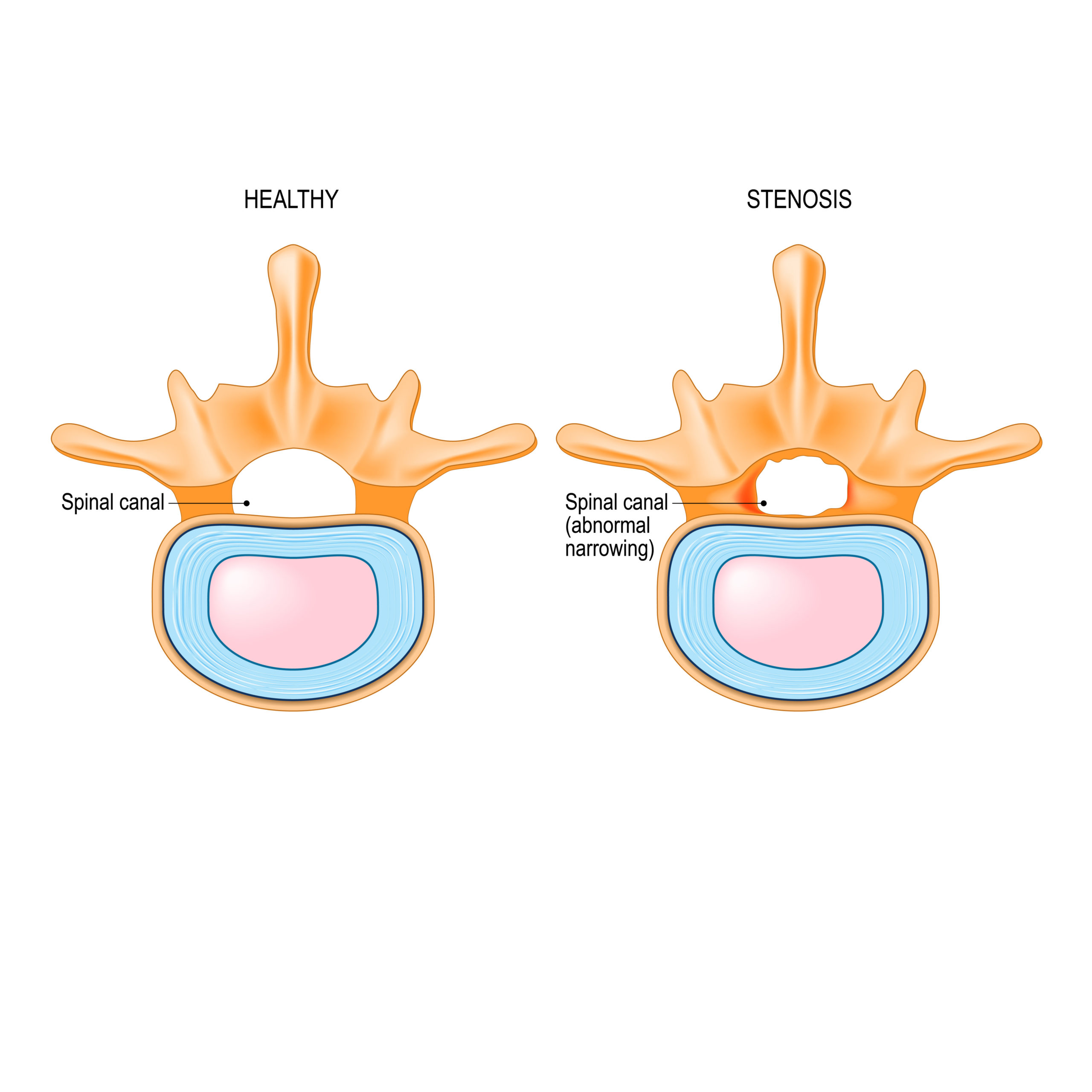What is lumbar stenosis?
Lumbar stenosis is a degenerative condition normally impacting people 60 and older, especially those with arthritis. Lumbar stenosis falls under the category of spinal stenosis, but focuses specifically on the lower back. The lower part of your spinal column slowly narrows, putting pressure on the nerves that run down the lower back into the legs.
Symptoms
Symptoms of lumbar stenosis include:
- Pain, weakness or numbness in the legs, calves, or buttocks.
- Cramping in the calves and pain in the legs while walking.
- Pain radiating into one or both thighs and legs, similar to the pain associated with sciatica.
The symptoms of lumbar stenosis usually fluctuate in severity, and impact everyone differently. In more extreme cases, patients can experience loss of functioning in the legs, bowels, or bladder. These cases are quite rare.
How is lumbar stenosis diagnosed?
If you are experiencing backpain you think might be caused by lumbar stenosis, visit a medical professional. They can use any of the following methods to diagnose lumbar stenosis:
- X-rays
- CT or CAT scans
- An MRI
- Myelogram
Treatment
There are a few ways to treat lumbar stenosis. The following can be helpful:
- Anti-inflammatory and/or pain relief medications. Over-the-counter drugs such as aspirin, ibuprofen, and acetaminophen can provide temporary pain relief.
- Cortisone injections. These pain-relieving injections go straight into the area around the spinal column, this is an epidural injection.
- Physical therapy. This can help strengthen and stretch muscles in the back and abdomen.
- Surgery. Surgery is not always necessary, but can provide long-term relief to extreme cases of lumbar stenosis.


